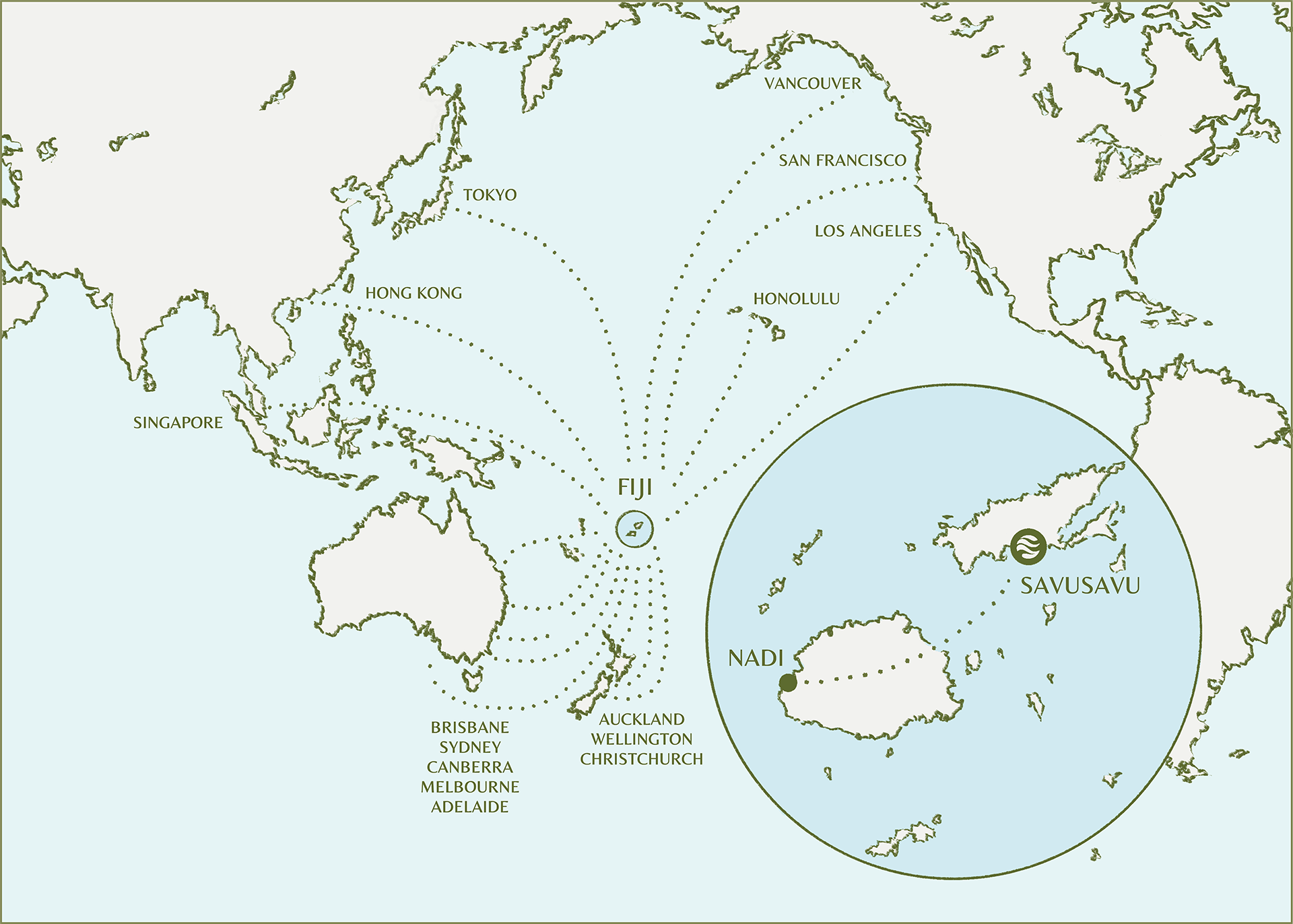STORIES
Top historical sights to see in Fiji
People have lived in the Fiji islands for thousands of years, and that rich history means a multitude of historically significant places to visit. Here are just a few:
Sacred Heart Cathedral
This beautiful cathedral was built in 1902 from sandstone milled from Australian quarries, and it serves as the main Roman Catholic Church in the Fiji islands. Located on Pratt Street in the capital city of Suva, it features striking ornaments and stained glass as well as a basement crypt.
B26 Bomber Wreck, Beachcomber Island
Fiji is known for its epic dive spots and this one has a historical flair to it. One note: You'll need a dive certificate to see what makes it so fascinating. This crash site on the seafloor near Beachcomber Island in the Mamanucas holds the remains of a World War II B26 bomber plane. The aircraft wreckage is scattered throughout the ocean floor, but wing sections and propellers can be clearly seen on a path led by a rope to guide divers.
Warrior Burial Cave, Taveuni
Possibly one of the most Instagram-worthy sights on our list is the Warrior Burial Cave in Taveuni. This extensive cave system is named after the Taveuni warriors that were buried here, which was once considered the burial site of highest honour for the area's original inhabitants. It acted as a hiding place for the remains of great soldiers, helping to keep them from desecration by invading armies. (Many of the large bones, however, were removed when the 350-metre-long cave system was discovered in the 1950s.)
Naihehe Caves, Sigatoka
If you still fancy cave life, consider this "place to get lost" – which is the literal translation of the name of these caves: Naihehe. And as Fiji's largest cave system it's easy to get lost. Historically, these were used as a fortress to keep ancient tribes safe from invading armies. A fun – and somewhat ominous – tip: Seek permission from the Bete, the traditional protector of the cave, upon entering. Legend has it that if you don't, you could be trapped in the cave forever. It even features a secret entrance through wild vines that enabled it to stay hidden.

Momi Bay gun site
If you find yourself with some extra time before you fly in or out of Fiji's Nadi International Airport, consider a quick 30-minute sojourn to a place that played a key role in World War II. The Momi Bay site was established in 1941 to protect against Japanese forces and features two 6-inch anti-aircraft guns. The area was chosen for its uncompromising panoramic views of the only channel in Western Fiji that large ships could traverse. There are also barracks and other historical markers for visitors to see.
Udre Udre's grave, Rakiraki
Now to one of the creepier historical sites, that of the grave of Fiji's most prolific cannibal: Udre Udre was a tribal chief in northern Viti Levu who – stories claim – had eaten more than 800 people in his lifetime. In fact, it is said that the leader kept a stone for each of his victims that can be seen surrounding his grave in Rakiraki. This simple grave does indeed feature those 800 rocks, and some say his spirit lingers. Perhaps don't visit this one alone.
NAAG Mandir Temple, Labasa
This is both an historical site and a modern-day temple, but with a notable twist. In this 'snake temple' lives the Sacred Cobra Rock that some locals claim can cure sickness and infertility. The temple isn't without its historical lore however as the 3-metre-high rock has reportedly grown so much since the 1950s that the roof of the temple has had to be raised four times. It has become a worshipful place for many and can be seen covered in flowers and tinsel as well as offerings of fruit, fire and coconut cream.
Tavuni Hill Fort, Sigatoka
This ancient fort sits on the site of brutal battles between Tongan invaders and British troops. Established as a stronghold on the steep hillside this fort served as the base for the Tongans, who would ultimately be driven out in 1876 by British forces. While the fort remained uninhabited until the site was reopened in 1994 the structure and items inside have been preserved and can be seen alongside guides who are actual descendants of the original inhabitants. Additionally get your cameras ready as the lookout points overlooking the Sigatoka River and Viti Levu Coastline are ripe for photo opportunities.
For more information on the best places to visit while staying in Fiji at the Jean-Michel Cousteau Resort, contact us today!
SUBSCRIBE
Stay up to date
To stay in touch and be inspired by our latest news & stories from Jean-Micheal Cousteau Resort Fiji, please register your interest.








